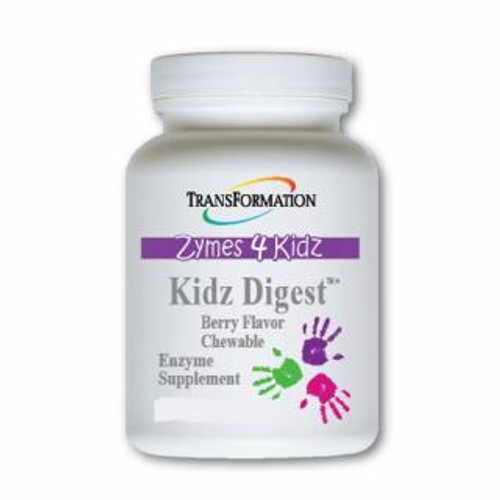Product Overview
Pharmax Chewable Vitamin D- 90 tabs
• Derived from natural sources • Uses lanolin as a precursor, providing 1000 IU per tablet • Factor into the maintenance of good health • Helps in the development and maintenance of bones and teeth (1) • Helps in the absorption and use of calcium and phosphorus (2) • USP and European pharmacopeia compliant • Also Food Codex grade • Great-tasting, natural blackcurrant-flavored and easy-to-use tablet format • Increases patient compliance
References: 1 NHPD Monograph on Vitamin D. August 2007. 2 NHPD Monograph on Vitamin D. August 2007.
Additional product info: Calcium and vitamin D are both essential for the development and maintenance of skeletal health. Calcium plays a vital role in neuromuscular function, many enzyme-mediated processes, blood clotting and in providing rigidity to the skeleton by virtue of its phosphate salts. Over 99% of the body’s calcium is stored in the bone, where, apart from providing mechanical strength, it serves as a mineral reservoir that can be drawn upon to maintain normal plasma calcium. Vitamin D is required to maintain normal blood levels of calcium and phosphate, which are in turn needed for the normal mineralization of bone, muscle contraction, nerve conduction and the general cellular functioning of all body cells. Vitamin D, derived from both endogenous (skin) and exogenous (diet) sources, is converted into 25OHD in the liver and then into 1,25(OH)2D in the kidneys. The latter metabolite controls calcium absorption. However, plasma 25OHD closely reflects vitamin D nutritional status, and because it is the substrate for the renal enzyme that produces 1,25(OH)2D, it could have mainly an indirect and also a direct effect on calcium absorption. A vitamin D shortage would reduce the intestinal absorption of calcium, which could worsen if the diet is deficient of this element. Osteoporosis and its clinical consequence, fragility fractures, are now recognized as major public health problems. Bone mass declines and the risk of fractures increases as people age, especially postmenopausal women. An adequate intake of calcium and vitamin D, including supplementation, has been advocated as a universal primary intervention in the prevention and treatment of high-risk patients. Evidence shows that there is still a high proportion of people with inappropriately low calcium and vitamin D intake and serum levels. For selective groups of people, such as the elderly (frequently older than 70 years), those with low solar exposure and in generally poor or inadequate nutritional condition, guaranteeing a daily intake of at least 1 g of calcium and 700–800 IU of vitamin D with supplements would have beneficial effects on bone health. In those individuals with a high risk of osteoporotic fracture, calcium and vitamin D supplements are necessary but frequently insufficient (3). The Women’s Health Initiative (WHI) clinical trial randomly assigned 36,282 postmenopausal women to receive 1000 mg of elemental calcium as calcium carbonate with 400 IU of vitamin D3 daily or placebo for an average follow-up period of 7.0 years. Significantly higher hip bone density but a non-significant reduction (12 percent) in the rate of hip fracture among those assigned to calcium with vitamin D were observed (4). A recent review discusses vitamin D status and supplementation when treating patients with osteoporosis in relation to risks and prevention of falls and fractures. The authors conclude that poor vitamin D status and low calcium intake are important determinates for osteoporosis and fracture risk. Based on evidence from literature, adequate supplementation with at least 700 IU of vitamin D, preferably cholecalciferol, is required for improving physical function and prevention of falls and fractures. Additional calcium supplementation may be considered when dietary calcium intake is below 700 mg/day, with a supplementation dose that leads to a maximum total daily calcium intake of 1000 to 1200 mg (5).
Vitamin D receptor has been found on many immune cells, such as macrophages, dendritic cells, T and B cells, mainly after activation. It has been shown that vitamin D inhibits pro-inflammatory processes by suppressing the over-activity of CD4+ Th1, Th2 and Th17 cells and the production of their related cytokines such as interleukin-2, interferon-gamma and tumor necrosis factor-alpha. When immunomodulatory mechanisms of vitamin D are discussed, many studies point to their ability to enhance the anti-inflammatory loop, namely, their ability to modulate T regulatory cell function (6). An uncontrolled vitamin D supplementation trial among 50 apparently healthy subjects including supplementation of 140,000 IU at baseline and after 4 weeks (visit 1) was conducted. A final follow-up visit was performed 8 weeks after the baseline examination (visit 2). Vitamin D supplementation was associated with significantly increased % Regulatory T Cells (%Tregs) in apparently healthy individuals. This finding supports the hypothesis that vitamin D-induced stimulation of Tregs is a possible pathophysiologic mechanism by which vitamin D may prevent autoimmune diseases (7).
Vitamin D has complex effects on pulmonary cell biology and immunity with impact on inflammation, host defense, wound healing, repair, and other processes. While the knowledge on direct mechanistic links between Vitamin D and lung diseases is limited, a number of epidemiological and experimental are available that highlight the relevance of this connection (8). A placebo-controlled, double-blinded study involving 164 young Finnish men provides some evidence for a preventive effect of daily supplementation with 400 IU of vitamin D for 6 months against respiratory tract infection (9).
References: 3 Díaz-López B, Cannata-Andía JB. Supplementation of vitamin D and calcium: advantages and risks. Nephrol Dial Transplant. 2006 Sep;21(9):2375-7. Page 2375, Introduction, 1st, 3rd and 4th paragraphs; Page 2376, last 2 paragraphs 4 Jackson RD, LaCroix AZ, Gass M, Wallace RB, Robbins J, Lewis CE, Bassford T, Beresford SA, Black HR, Blanchette P, Bonds DE, Brunner RL, Brzyski RG, Caan B, Cauley JA, Chlebowski RT, Cummings SR, Granek I, Hays J, Heiss G, Hendrix SL, Howard BV, Hsia J, Hubbell FA, Johnson KC, Judd H, Kotchen JM, Kuller LH, Langer RD, Lasser NL, Limacher MC, Ludlam S, Manson JE, Margolis KL, McGowan J, Ockene JK, O'Sullivan MJ, Phillips L, Prentice RL, Sarto GE, Stefanick ML, Van Horn L, Wactawski-Wende J, Whitlock E, Anderson GL, Assaf AR, Barad D; Women's Health Initiative Investigators. Calcium plus vitamin D supplementation and the risk of fractures. N Engl J Med. 2006 Feb 16;354(7):669-83. Page 669, Abstract; Page 680, Discussion, last paragraph; Page 680, Conclusion 5 van den Bergh JP, Bours SP, van Geel TA, Geusens PP. Optimal use of vitamin D when treating osteoporosis. Curr Osteoporos Rep. 2011 Mar;9(1):36-42. Page 36, Abstract; Page 40, Conclusion 6 Toubi E, Shoenfeld Y. The role of vitamin D in regulating immune responses. Isr Med Assoc J. 2010 Mar;12(3):174-5. Page 174, 2nd & 5th paragraphs 7 Prietl B, Pilz S, Wolf M, Tomaschitz A, Obermayer-Pietsch B, Graninger W, Pieber TR. Vitamin D supplementation and regulatory T cells in apparently healthy subjects: vitamin D treatment for autoimmune diseases? Isr Med Assoc J. 2010 Mar;12(3):136-9. Page 136, Abstract; Page 138, Discussion, 1st paragraph 8 Herr C, Greulich T, Koczulla RA, Meyer S, Zakharkina T, Branscheidt M, Eschmann R, Bals R. The role of vitamin D in pulmonary disease: COPD, asthma, infection, and cancer. Respir Res. 2011 Mar 18;12:31. Page 4, 2nd paragraph 9 Laaksi I, Ruohola JP, Mattila V, Auvinen A, Ylikomi T, Pihlajamäki H. Vitamin D supplementation for the prevention of acute respiratory tract infection: a randomized, double-blinded trial among young Finnish men. J Infect Dis. 2010 Sep 1;202(5):809-14. Page 810, Subjects and Methods, 1st paragraph; Page 811, Discussion, 1st paragraph; Page 813, Conclusion
Other ingredients: Sorbitol, xylitol, natural blackcurrant flavor, silica, vegetable magnesium stearate








